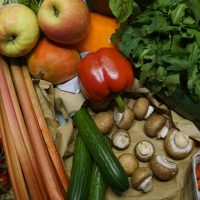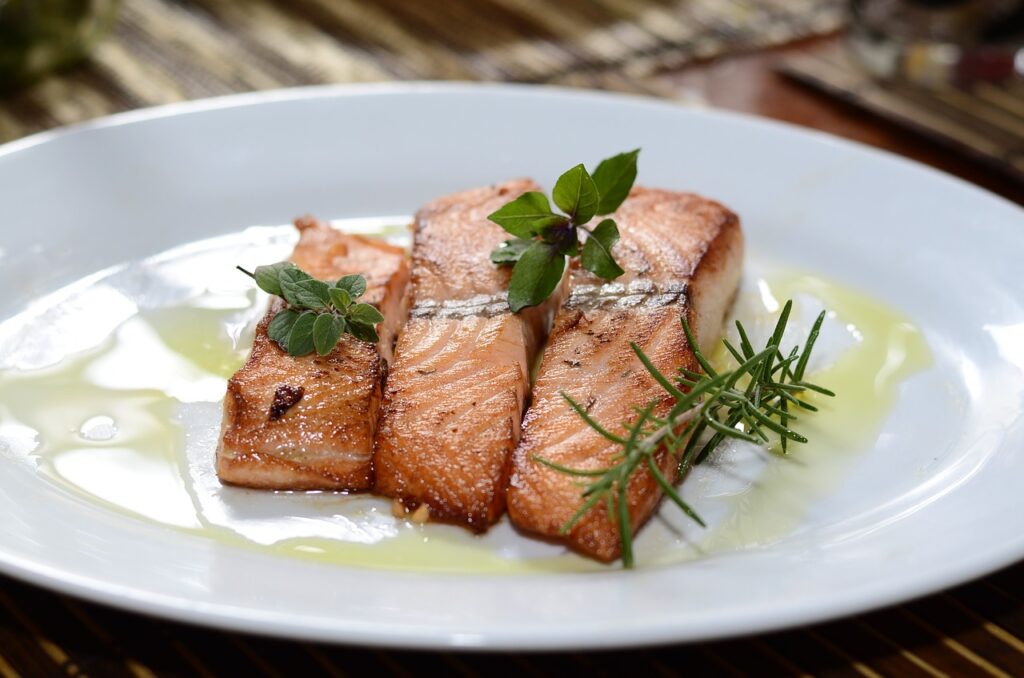This year, 2020, started out so differently from what it has become. Having been released from the hospital just before Christmas, we celebrated the new year quietly, compared to so many times in the past. But, also with joyful anticipation at learning new ways of doing things more thoughtfully. Since the introduction of COVID-19, we find ourselves hunkering down, going outside sparingly – sometimes only as a last resort. Spending way too much time at the computer. Still, I have to evaluate old dietary practices. Do I adopt a diet plan to follow to make the task easier to plan. If so, which one?
With so much information at our fingertips, it can be really challenging to separate fact from fiction. But eating nutritiously doesn’t have to require a graduate degree in nutrition…does it? Here are some essential tips to help ensure you’re getting the nutrients your body needs to stay healthy and energetic.
If ever there was a time to focus on getting enough lean protein, it’s now. I’m over 70. Dietary patterns tend to shift somewhat as we age. As people get older, the calories that were once spent on lean protein might now be spent on simple carbohydrates or fats. And, that could increase the odds of contracting heart disease.
It is important that older adults get the protein they need to maintain muscle mass, fight infection and recover from an accident or surgery. Chewing protein foods such as meat can also be a problem for some older adults. A few ways to pump up your protein intake, without causing serious damage to your food budget , include: eating more beans, spreading natural peanut butter on crackers, add low-fat cheese to scrambled eggs and use fat-free or low-fat milk when making oatmeal. Some mornings, I get hungry before it is time for lunch. Then, I make a protein shake. This has the added benefit of supplementing my Calcium and Potassium requirements, too.
Not only does adequate protein help support muscle growth and repair, but it’s also more filling than carbs and fats, meaning you’ll be less likely to reach for unhealthy snacks when your protein intake is right.
A contributing factor to the need for more protein at my age is that metabolism rates drop significantly as we age. The right amount of protein for any one individual depends on many factors, including their activity level, age, muscle mass, and current state of health.
I’m not a vegan. I eat animal products like meat, fish, eggs, and limited amounts of dairy every day. So, I am getting a supply of essential amino acids through diet in the suggested “right” ratio for me to make full use of them. This does not mean that vegetarians cannot get their required amino acids. It just takes a little more planning to accomplish the same result (1, 2, 3).
Protein promotes feelings of fullness, helps to maintain muscle mass and has the highest metabolic effect, meaning it burns more calories while being digested compared to carbs or fats.
The Academy of Nutrition and Dietetics recommends a daily protein intake of between 0.64 to 0.82 grams of protein per pound of bodyweight to build muscle mass. What does that actually look like on a plate? A standard 3 oz (85 g) serving of meat or fish should fit into your palm; a half-cup (100g ) of plant-based protein such as beans equals the size of your fist; two tablespoons (30 grams) of protein-packed peanut butter is about the size of your thumb.
Eat Good Carbohydrates
Carbohydrates are the best friend of proteins. Carbs help proteins to do their work properly. Carbohydrates are naturally occurring sugars, starches and fiber in food. All carbohydrates are made up of sugar molecules. Sugar molecules linked together form starches and fiber.
In the body, starches and sugars are broken down in the digestive system to glucose. Glucose is the fuel that provides energy and powers all of the body’s functions. Glucose is also called blood sugar.
Today’s diet writers divide carbs into two categories – Good Carbs and Bad Carbs. Good carbs are those with high fiber contents, meaning that they take longer to digest and convert to energy. Bad carbs have low fiber amounts like white flour and sugar.
Dividing carbohydrates into good carbs and bad carbs is an easy way to think about good nutrition, but these are not exact, scientific terms. When thinking about eating a healthy diet, eat whole grain, high fiber foods rather than enriched, low fiber foods.

Fiber is found in vegetables, fruits, beans and whole grains. Fiber promotes a healthy digestive system. It also can help prevent obesity and reduce the risk of heart disease and diabetes by slowing down digestion and keeping you full longer. Fiber can be soluble (dissolves in water) or insoluble (does not dissolve in water).
Soluble fiber can be found in most fruits; some vegetables, including corn, peas and carrots; oatmeal and oat bran; nuts, seeds and dry beans. When mixed with water during digestion, this type of fiber becomes a thick, gelatin material. Soluble fiber can help lower cholesterol (related to heart disease risk) and blood glucose (related to risk for diabetes).
Insoluble fiber is also found in a wide variety of foods, especially foods made with whole wheat flour, wheat bran, brown rice, whole grain cereals, couscous, most vegetables, and fruits. Insoluble fiber also helps the body move waste through the digestive system. And, it may help prevent blood clots that can cause heart attacks or strokes. Both kinds of fiber are important.
Don’t Eliminate All Fats
You need a small amount of fat in your diet to ensure good health. As humans though, we tend to favor overdoing it. The type of fat is just as important for health as the total amount of fat consumed.
It is important to choose unsaturated fats and stay away from saturated and trans fats. These contribute to a rise in unhealthy LDL cholesterol and reductions in healthy HDL cholesterol. This imbalance can increase your risk of high blood pressure, hardening of the arteries, heart attack and stroke.
Monounsaturated fats have been shown to improve blood cholesterol levels. They’re found in: olive oil, canola oil, peanut oil, non-hydrogenated margarine, avocados and some nuts.
Polyunsaturated fats can lower bad cholesterol levels (LDL cholesterol). One type is omega-3, which can help prevent clotting of blood, reducing the risk of stroke and also helps lower triglycerides, a type of blood fat linked to heart disease. A terrific source of omega-3 fat is Salmon (wild caught).
Saturated fat is generally considered as a bad fat because it can raise bad (LDL) cholesterol levels. High LDL cholesterol is identified as a risk factor for heart disease and stroke.
Foods that have high saturated fat levels include: fatty meats, full-fat dairy products, hard margarines and highly processed meats such as hot dogs, burgers and deli meats.
Good nutrition is essential to a strong immune system, which may keep you protection from seasonal illness and other health problems. And, while eating the right balance of proteins, carbohydrates and fats is necessary, there are additional nutrients which should be considered. These will be discussed in a future post.
